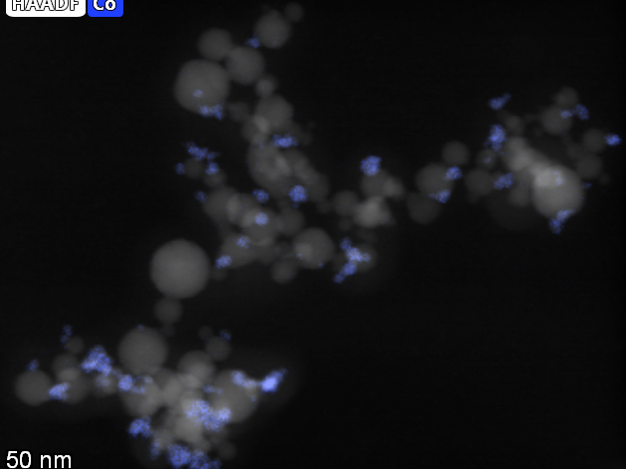DeepMixing – Quantification of the mixing and interfacial heterocharacteristics of nanoparticle aggregates forming in an aerosol mixing zone

Project Leader :
Prof. Dr.-Ing. habil. Lutz Mädler
University of Bremen
Prof. Dr. Andreas Rosenauer
University of Bremen
Functional hetero-contacts between two different nanomaterials are required in various applications including gas sensors, catalysis and batteries to achieve efficient transport processes across the interfaces. In this project, the preparation and formulation of hetero-contacts in the gas phase is realized through the combination of two nanoparticle aggregate producing flames in a double flame spray pyrolysis (DFSP) setup.
The product functionality depends on the degree of mixing that determines the number of hetero-contacts and on the hetero-contact quality. The hetero-contact quality significantly depends on the contact area and on the atomic structure of the interface including lattice strain and defect chemistry, if interfacial transport processes govern the functionality. The variation of DFSP process parameters enables the adjustment of the mixing process and resulted in improved functionalities in various applications. However, the characterization of the hetero-contacts on the aggregate and particle scale is far from understood, where the small size of the primary particles of about 10 nm requires the use of transmission electron microscopy (TEM) imaging to achieve a sufficient resolution of the structures.
Therefore, the characterization and quantification of the mixture state of aggregates with hetero-contacts are investigated in this project, where the term mixture state explicitly includes the degree of mixing and the contact quality. We apply (S)TEM as indirect method (2D projection of 3D aggregate) using a SPECTRA 300 microscope with a corrector of the spherical aberration of the probe forming lens. The resolution in the STEM mode is 50 pm allowing to study the structural quality of interfaces on an atomic scale. The machine is equipped with a modern silicon drift EDX detector for acquisition of 2D elemental maps, an analytical tomography holder and an on-axis 360° rotation tomography holder.
This holder allows reconstruction of composition distribution in 3D for our direct characterization method. We will develop and investigate an automated evaluation of mixture states based on supervised machine learning algorithms, where required training datasets (>100.000 images) consist of synthetic (computer generated) 3D aggregates with defined mixture states providing the ground truth. The parallel method development for tomographic reconstructions of the aggregates will provide the experimental 3D validation of aggregate structures and the mixture states and enable the detailed investigation of the 3D hetero-contact interfaces in the atomistic level.

